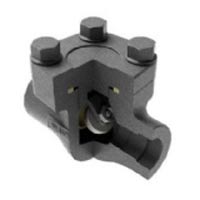1、 Working principle of pneumatic ball valve (diagram)
Pneumatic ball valve is a common control component that is modified through a plug valve. The difference is that the plug valve is circular, with a circular hole passing through its axis. So what is the purpose of pneumatic ball valves? What is the structure? Now let me explain to you.
2、 Pneumatic ball valve function
The working principle of pneumatic ball valves is to rotate the valve core to make the valve unobstructed or blocked. Pneumatic ball valve switches are lightweight, small in size, can be made into large diameters, reliable in sealing, simple in structure, easy to maintain, and the sealing surface and spherical surface are often in a closed state, which is not easily eroded by the medium. They are widely used in various industries.
Pneumatic ball valves and plug valves belong to the same type of valve, except that their closing element is a ball that rotates around the centerline of the valve body to achieve opening and closing.
Pneumatic ball valves are mainly used in pipelines for fast cutting speed, distribution, and changing the flow direction of media.
3、 Pneumatic ball valve structure
1. Floating pneumatic ball valve
The ball of a pneumatic ball valve is floating, and under the pressure of the medium, the ball can produce a certain displacement and press tightly against the sealing surface at the outlet end, ensuring the sealing of the outlet end.
The structure of the floating pneumatic ball valve is simple and has good sealing performance, but the ball bears all the load of the working medium and is transmitted to the outlet sealing ring. Therefore, it is necessary to consider whether the sealing ring material can withstand the working load of the ball medium. This structure is widely used for medium and low pressure ball valves.
2. Fixed ball pneumatic ball valve
The ball of a pneumatic ball valve is fixed and does not move under pressure. Fixed ball valves are equipped with floating seats, which move when subjected to medium pressure, causing the sealing ring to press tightly against the ball to ensure sealing. Usually, bearings are installed on the upper and lower shafts of the sphere, with a small operating torque, suitable for high-pressure and large-diameter valves.
In order to reduce the operating torque of pneumatic ball valves and increase the reliability of sealing, oil sealed ball valves have emerged in recent years. They inject special lubricating oil between the sealing surfaces to form an oil film, which enhances sealing performance and reduces operating torque, making them more suitable for high-pressure and large-diameter ball valves.
3. Elastic ball pneumatic ball valve
The ball of a pneumatic ball valve is elastic. The ball and valve seat sealing ring are both made of metal materials, and the sealing pressure ratio is very high. Relying on the pressure of the medium itself cannot meet the sealing requirements, and external force must be applied. This type of valve is suitable for high temperature and high pressure media.
An elastic sphere is obtained by creating an elastic groove at the lower end of its inner wall. When closing the channel, use the wedge-shaped head of the valve stem to expand the ball and press it against the valve seat to achieve sealing. Release the wedge-shaped head before rotating the sphere, and the sphere will return to its original shape, creating a small gap between the sphere and the valve seat, which can reduce friction and operating torque on the sealing surface.







